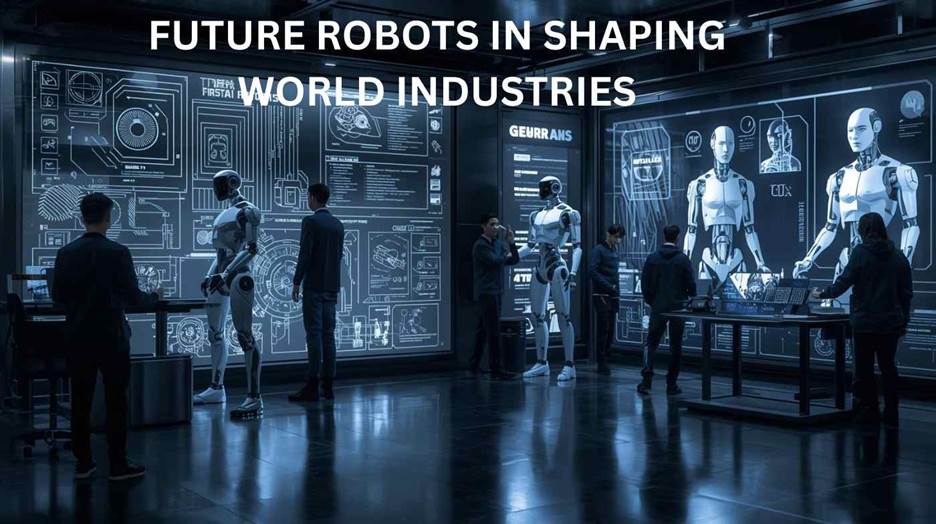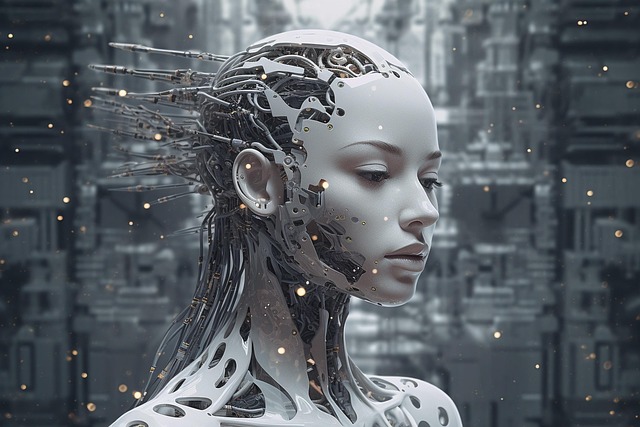Technology is evolving faster than ever before, and one of the most fascinating areas of advancement is robotics. While today’s machines already assist in industries, healthcare, and daily life, Future Robots promise to redefine how humans interact with technology. These intelligent machines are expected to be more adaptive, autonomous, and capable of tasks that were once considered impossible for non-human entities.
Table of Contents
This article explores the role, potential, and challenges of Future Robots, along with how they might shape our societies in the coming decades.

Understanding Future Robots
What Are Future Robots?
Future Robots are advanced machines designed to go beyond today’s robotic capabilities. Unlike traditional robots programmed for repetitive tasks, they will integrate artificial intelligence, machine learning, and sensory technologies to think, learn, and adapt. These robots will not only perform tasks but also collaborate, communicate, and evolve alongside humans.
Key Characteristics of Future Robots
- Ability to learn from real-world experiences
- Adaptability in dynamic and unpredictable environments
- Strong collaboration with humans and other machines
- Enhanced decision-making with minimal human input
Applications of Future Robots
Healthcare and Medicine
Future Robots are expected to revolutionize healthcare by assisting doctors in surgeries, providing remote medical consultations, and even offering emotional support to patients. Robotic caregivers could help aging populations, ensuring safety and comfort for the elderly.
Education and Learning
Education will also benefit greatly from Future Robots. Intelligent robotic tutors can personalize lessons for each student, monitor progress, and adapt teaching strategies based on learning styles. This will make education more interactive and inclusive.
Space Exploration
Exploring outer space is dangerous and costly for humans. Future Robots will likely play a key role in space missions by building infrastructure on other planets, analyzing extraterrestrial environments, and ensuring the safety of astronauts.
Everyday Life and Smart Homes
In the future, homes may be managed by Future Robots capable of cleaning, cooking, security monitoring, and even companionship. Their integration into daily life will create smarter and more efficient living spaces.
Advantages of Future Robots
Efficiency and Productivity
Future Robots will work faster and more accurately than humans in many areas, improving productivity while minimizing human error.
Risk Management
By performing hazardous tasks such as deep-sea exploration or handling toxic materials, Future Robots can protect human lives.
Personalization
Unlike current machines, Future Robots will be able to tailor their services based on individual needs, offering personalized healthcare, learning, or home assistance.
Sustainability
Future generations of robots may help address global issues such as waste management, renewable energy optimization, and sustainable agriculture.

Challenges of Future Robots
Ethical and Social Concerns
The rise of Future Robots raises ethical questions. How much autonomy should these machines have? Could they replace human roles to the point of reducing employment opportunities? Addressing these concerns will be crucial.
Dependence on Technology
With Future Robots handling more aspects of life, societies risk becoming overly dependent on machines. A balance must be maintained to ensure humans remain in control.
Cost and Accessibility
Developing advanced robotics is expensive. Ensuring that Future Robots are accessible to all, and not just wealthy nations or organizations, will be a global challenge.
Security Threats
As Future Robots become interconnected with digital systems, they may be vulnerable to cyberattacks, posing serious risks to industries and individuals alike.
The Future of Robotics
Integration with Artificial Intelligence
The evolution of Future Robots will be tightly linked to advancements in AI. Robots that can reason, predict, and make decisions will move beyond automation into true collaboration with humans.
Human-Robot Collaboration
Rather than replacing humans, Future Robots will likely work alongside them, enhancing productivity in industries while taking on repetitive or dangerous tasks.
Impact on Society
The introduction of Future Robots will change how societies function. From reshaping job markets to altering education and healthcare systems, their influence will be profound and far-reaching.
Expanding Global Connectivity
As robotics technology spreads worldwide, Future Robots will connect industries, governments, and communities, fostering global cooperation in solving critical issues such as climate change and resource management.
Future Robots and Human Life
Shaping Human Experiences
Future Robots will not just be tools but partners in everyday life. They will provide companionship, improve accessibility for individuals with disabilities, and enhance the overall quality of human experiences.
Creating New Opportunities
The rise of Future Robots will generate new job roles in robotics design, programming, maintenance, and ethics. This technological shift will inspire innovation across multiple fields.
Conclusion
Future Robots represent the next great leap in technological advancement. From healthcare and education to space exploration and daily life, their potential to transform society is limitless. While challenges such as ethics, cost, and security must be carefully managed, the opportunities they create are far greater.
The journey toward a world shaped by Future Robots is already underway. By embracing innovation responsibly, humanity can look forward to a future where robots are not just machines but partners in progress, working hand-in-hand with humans to build a smarter, safer, and more connected world.
Pingback: Sensory Robotics: The Future of Intelligent Perception and Touch -